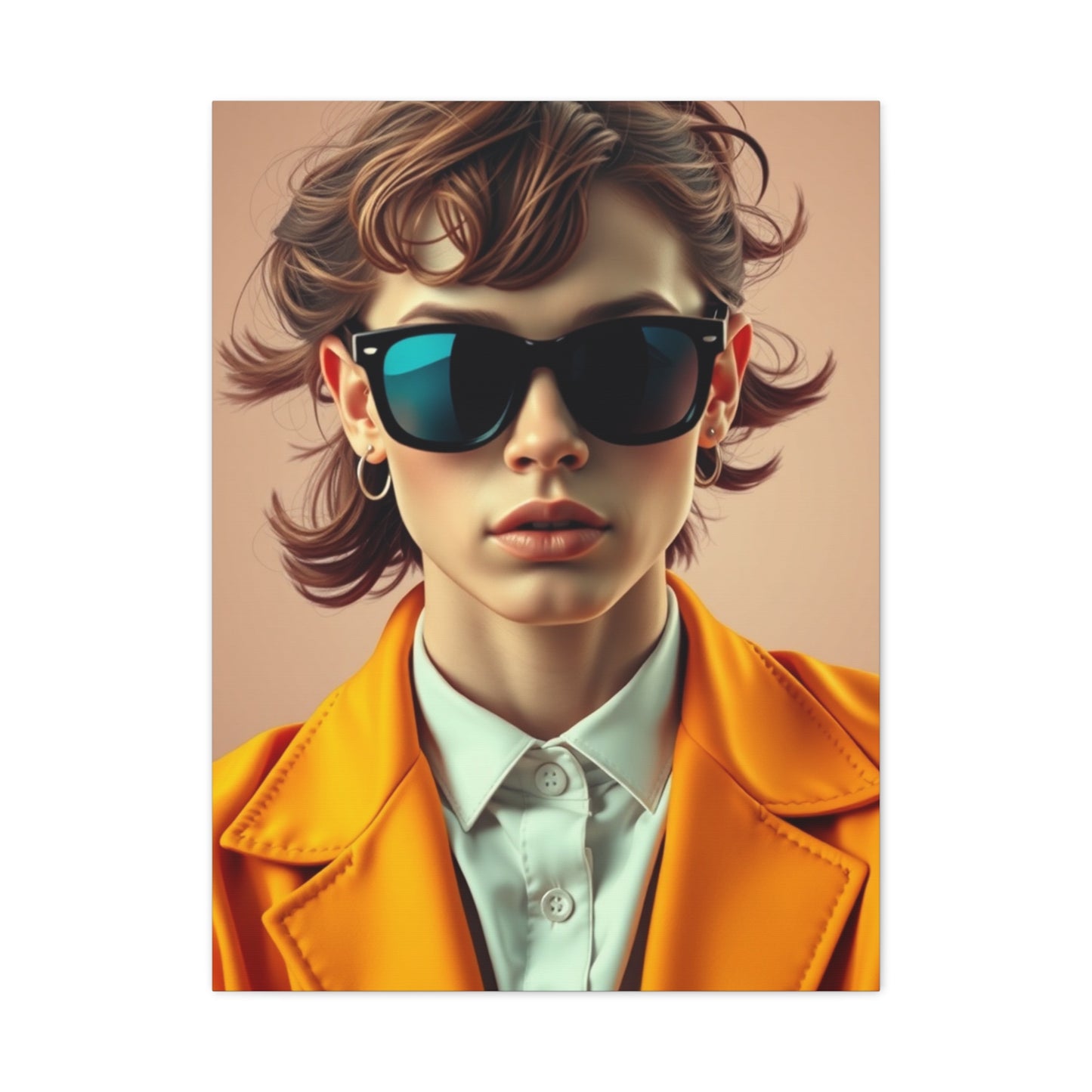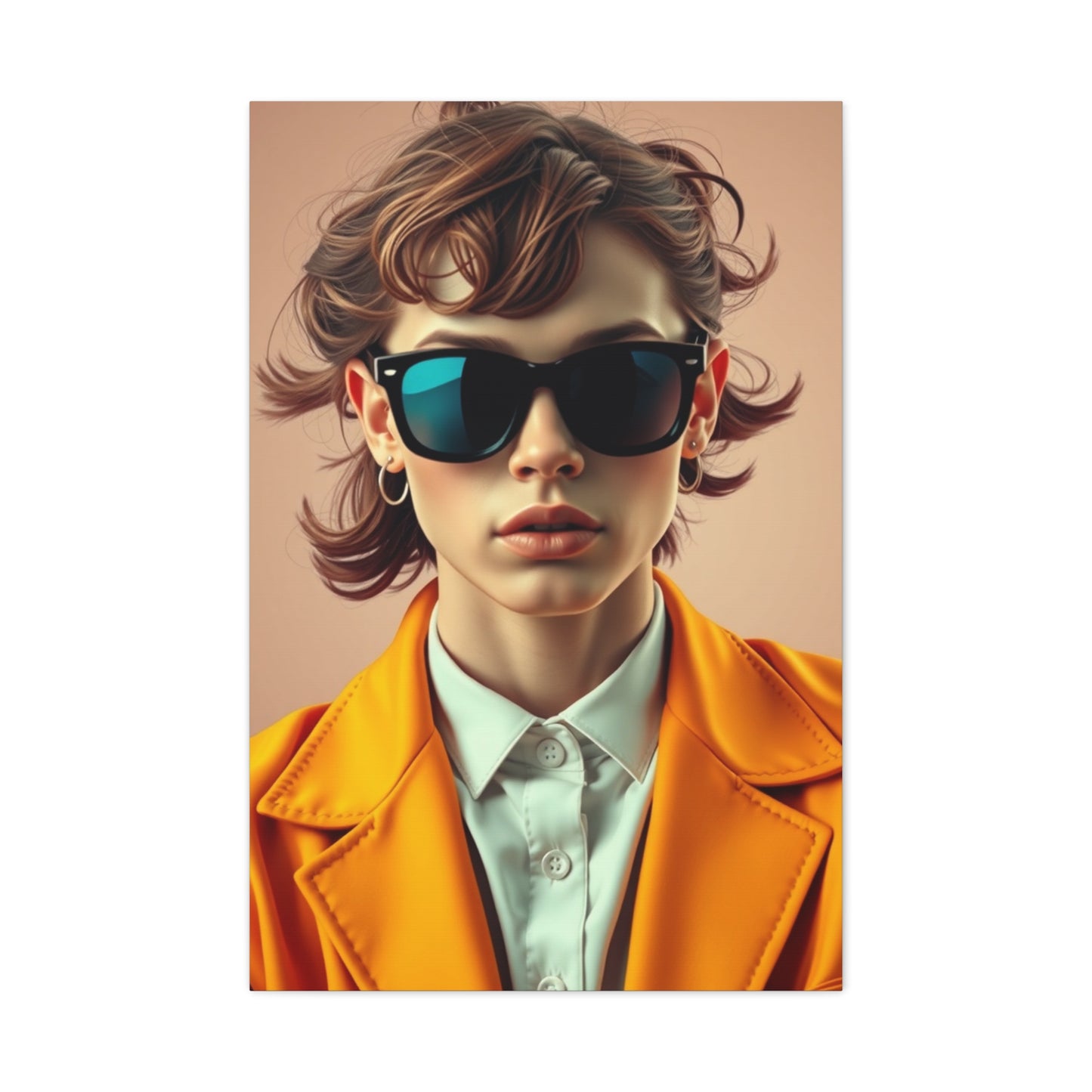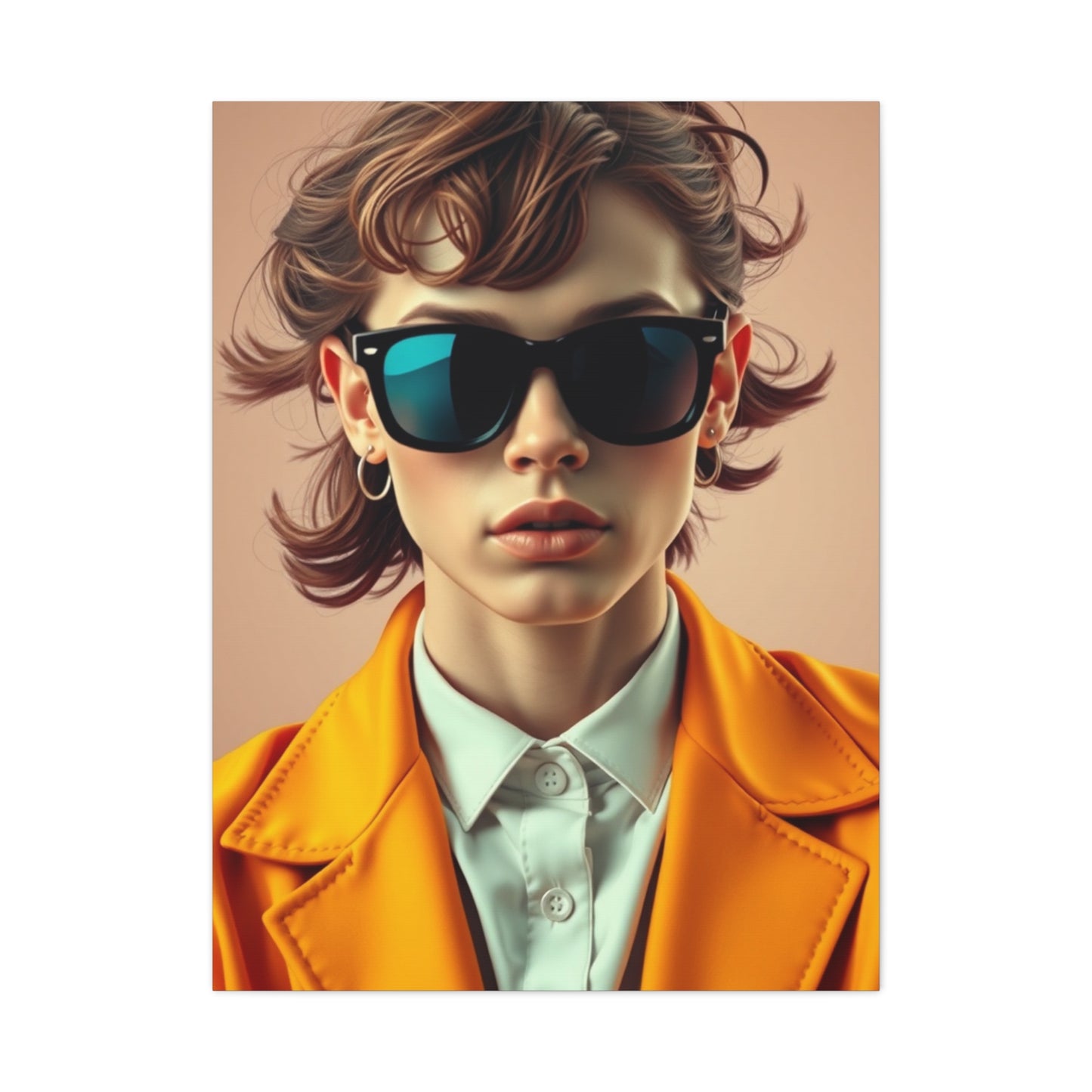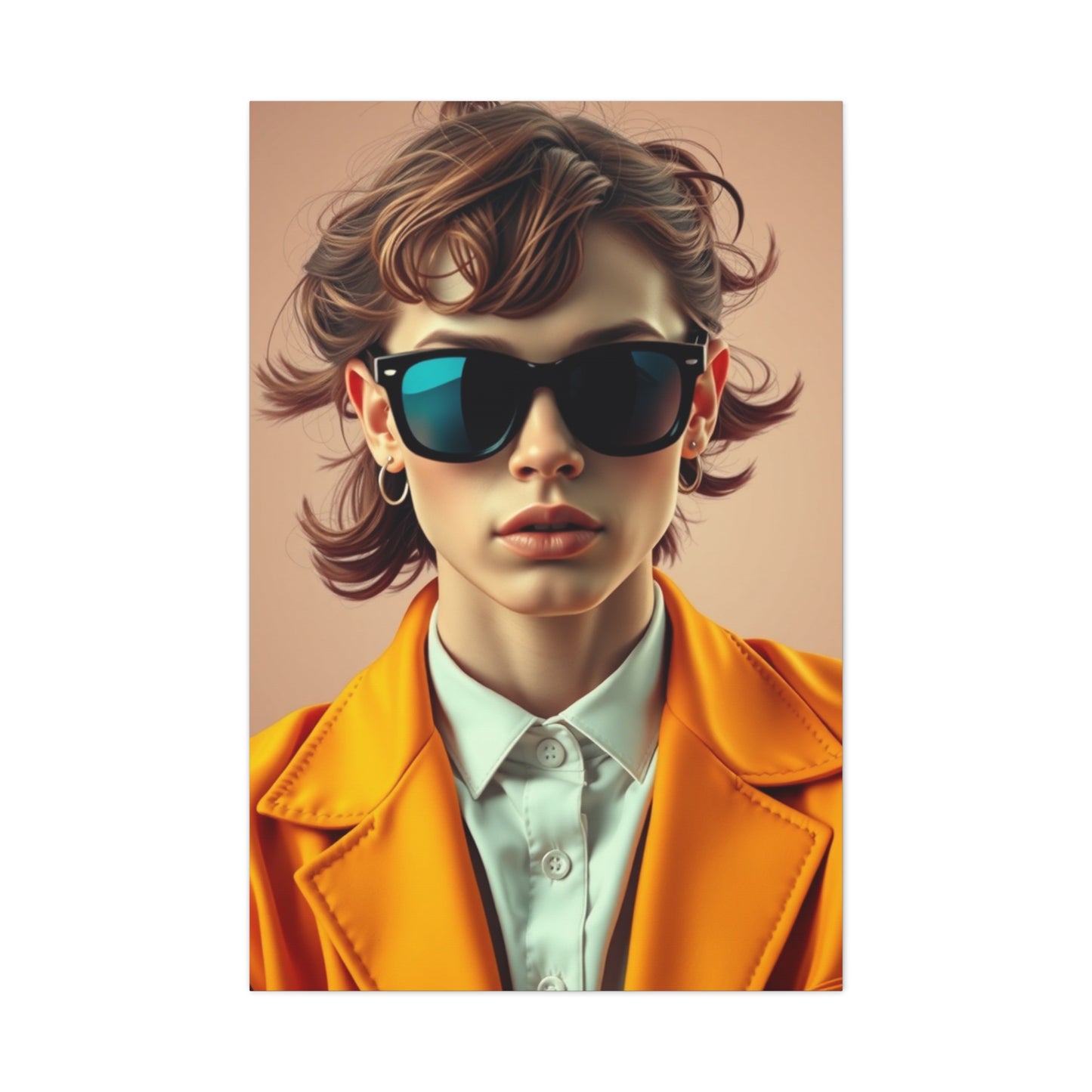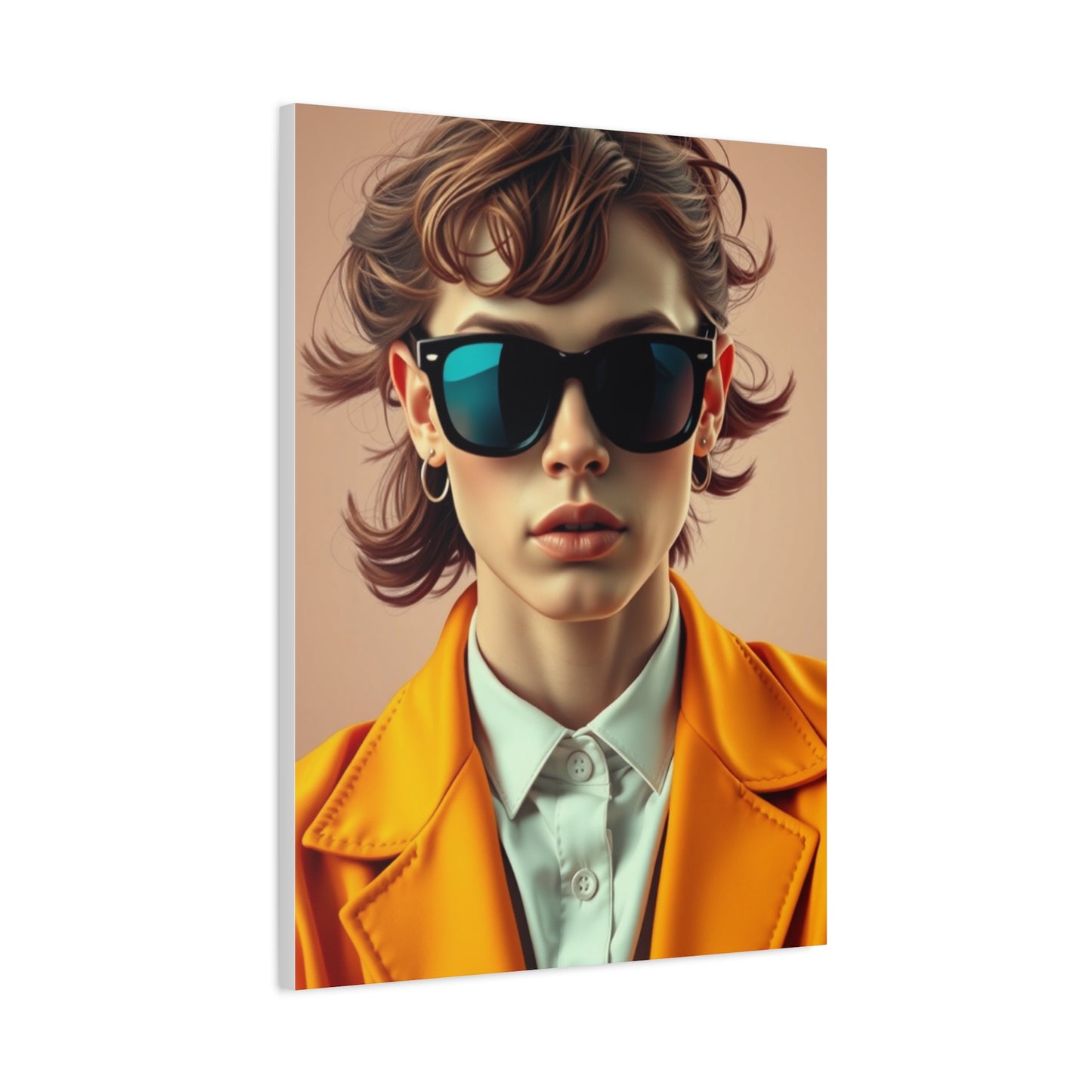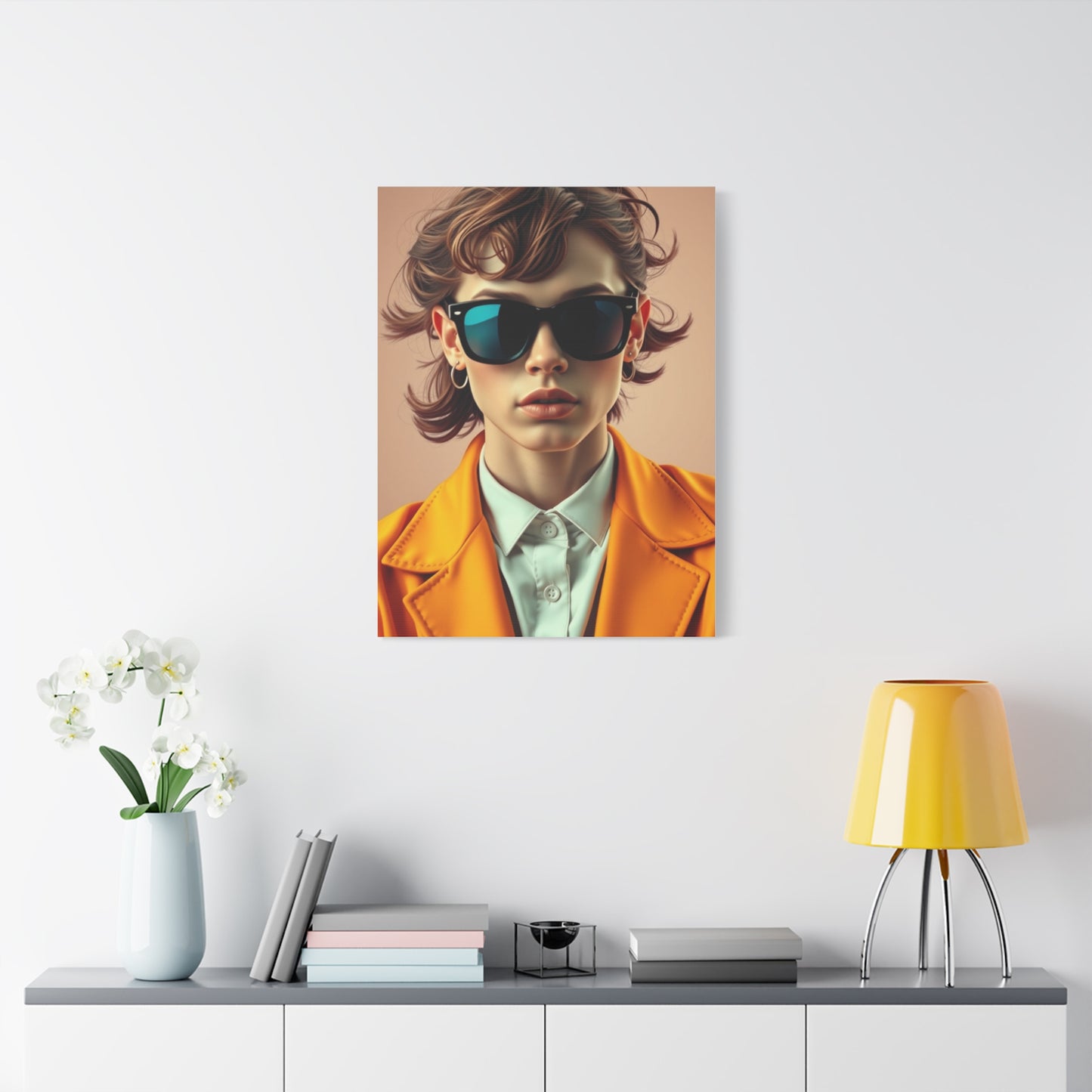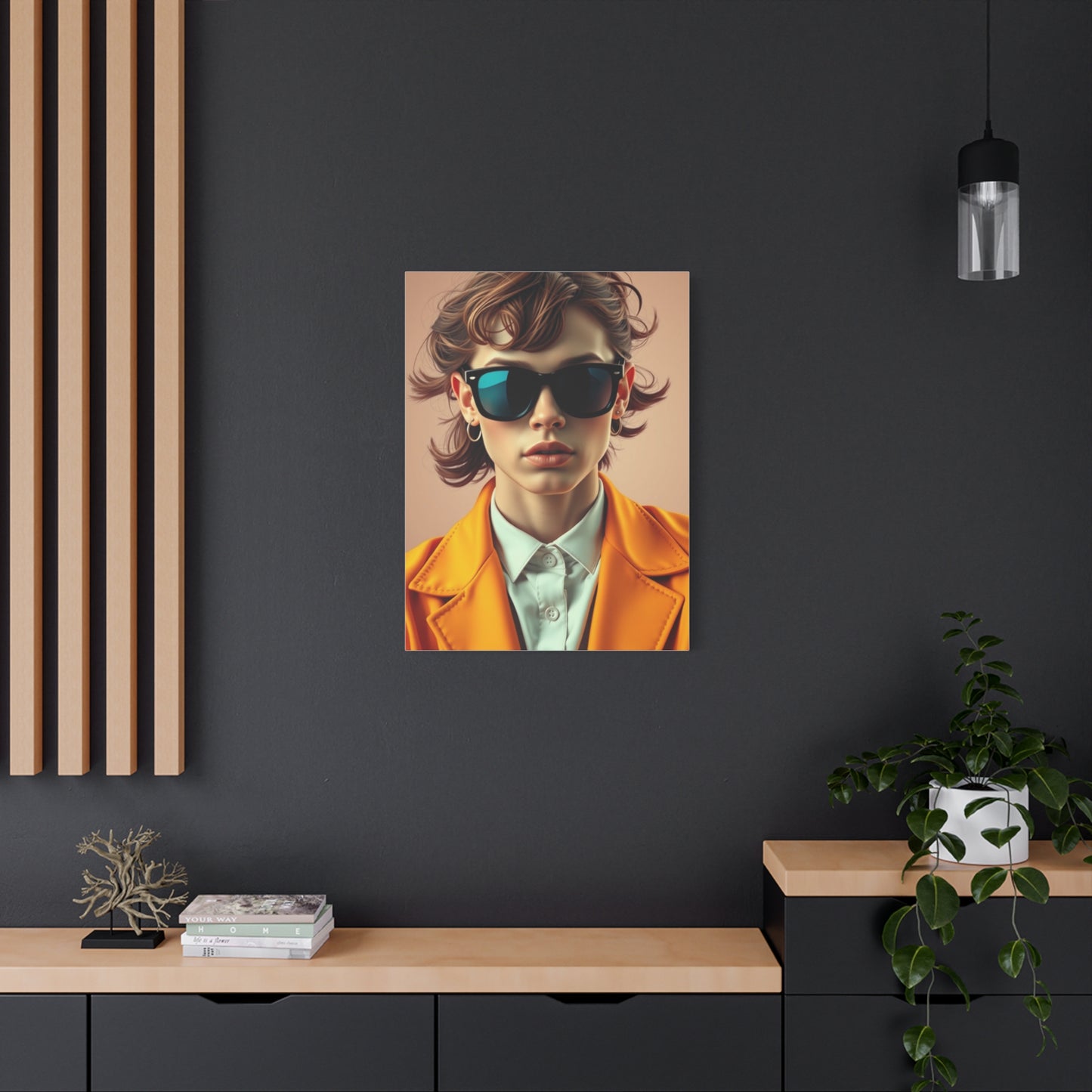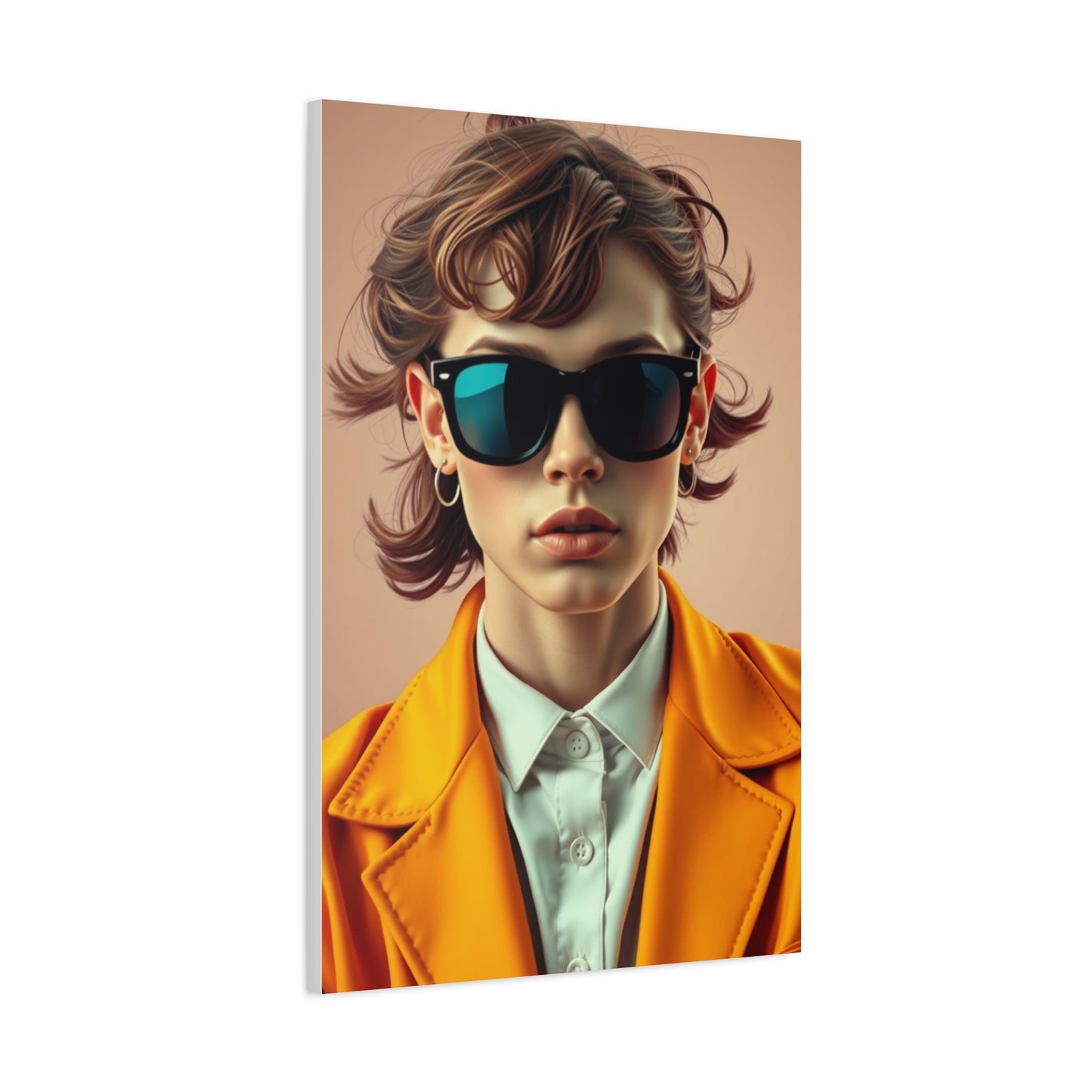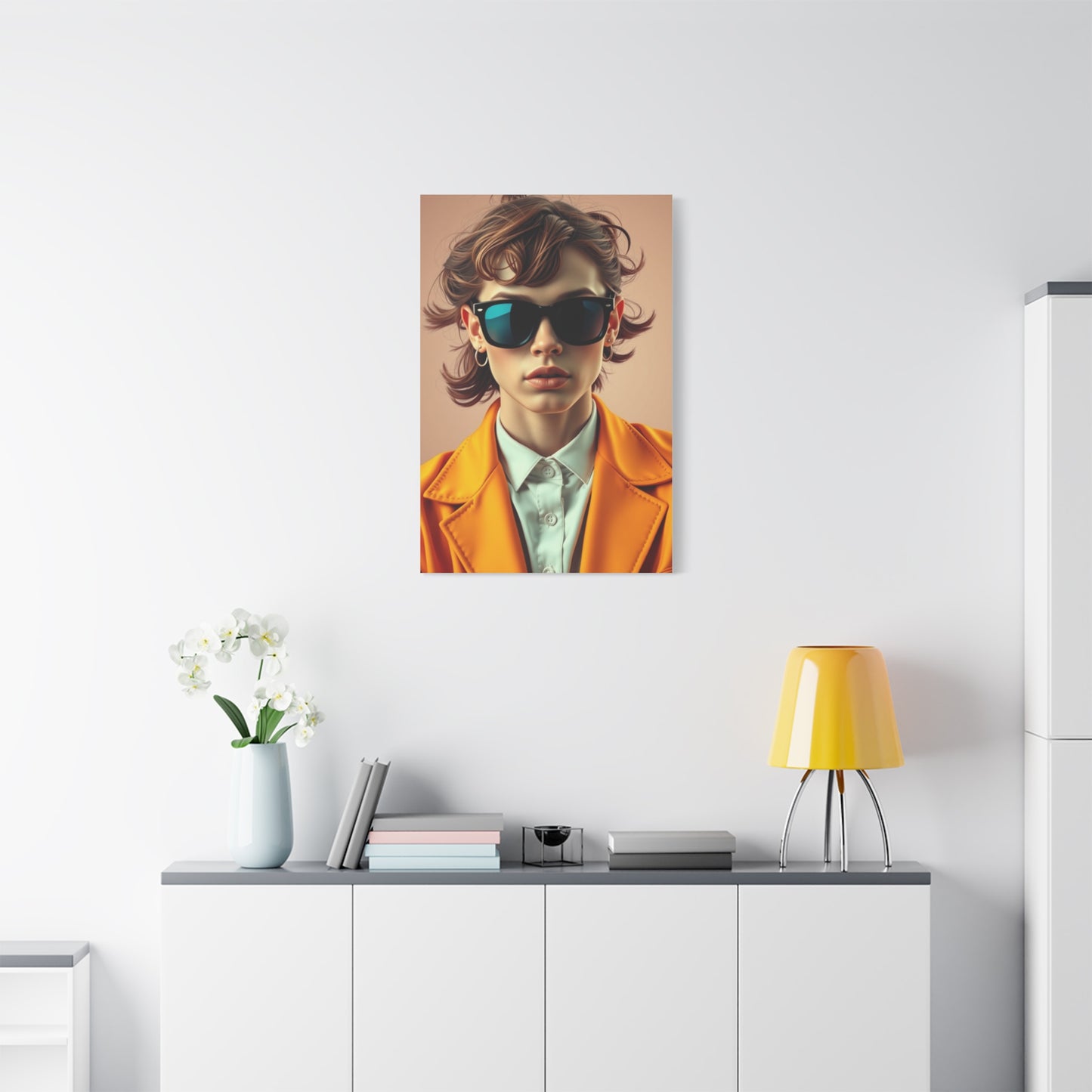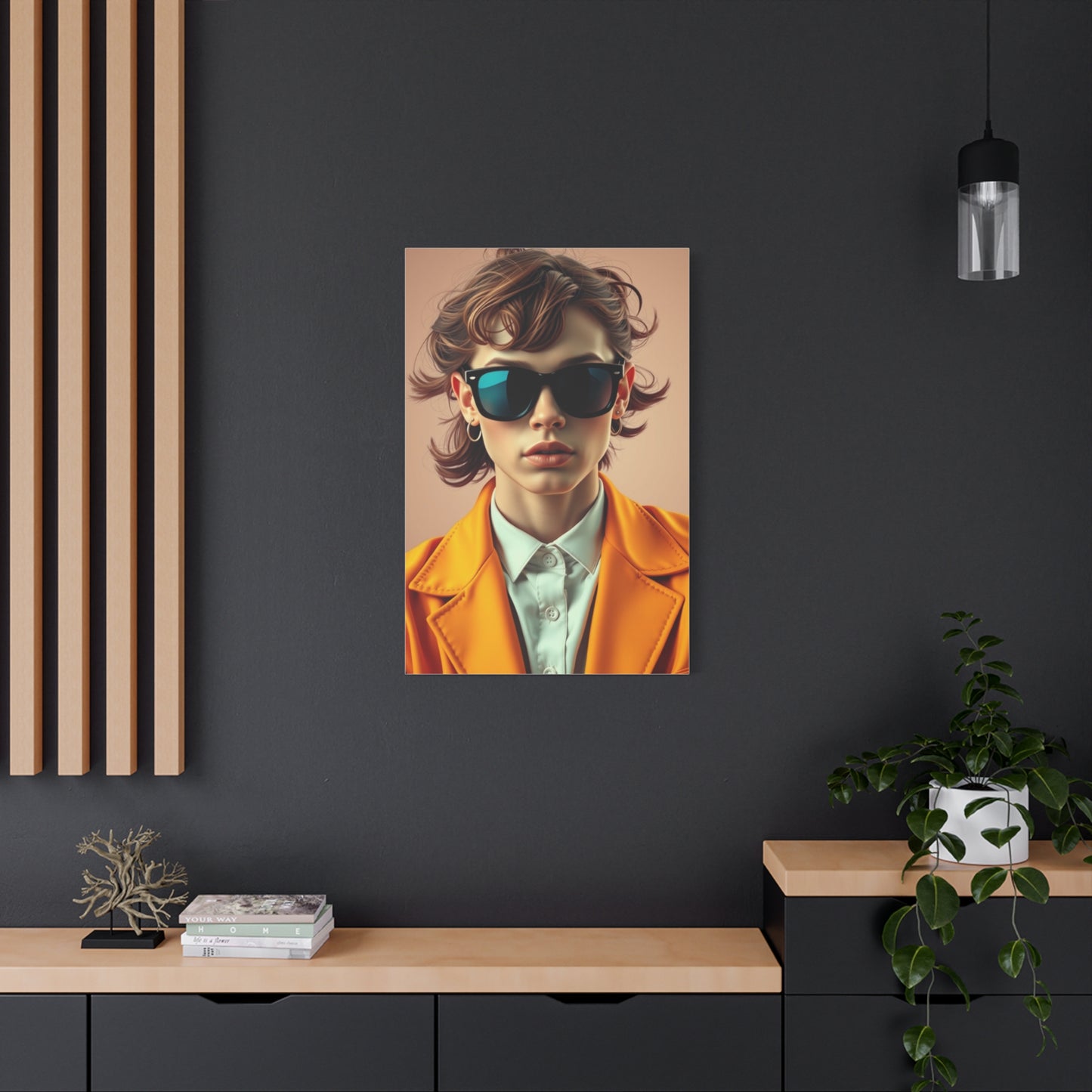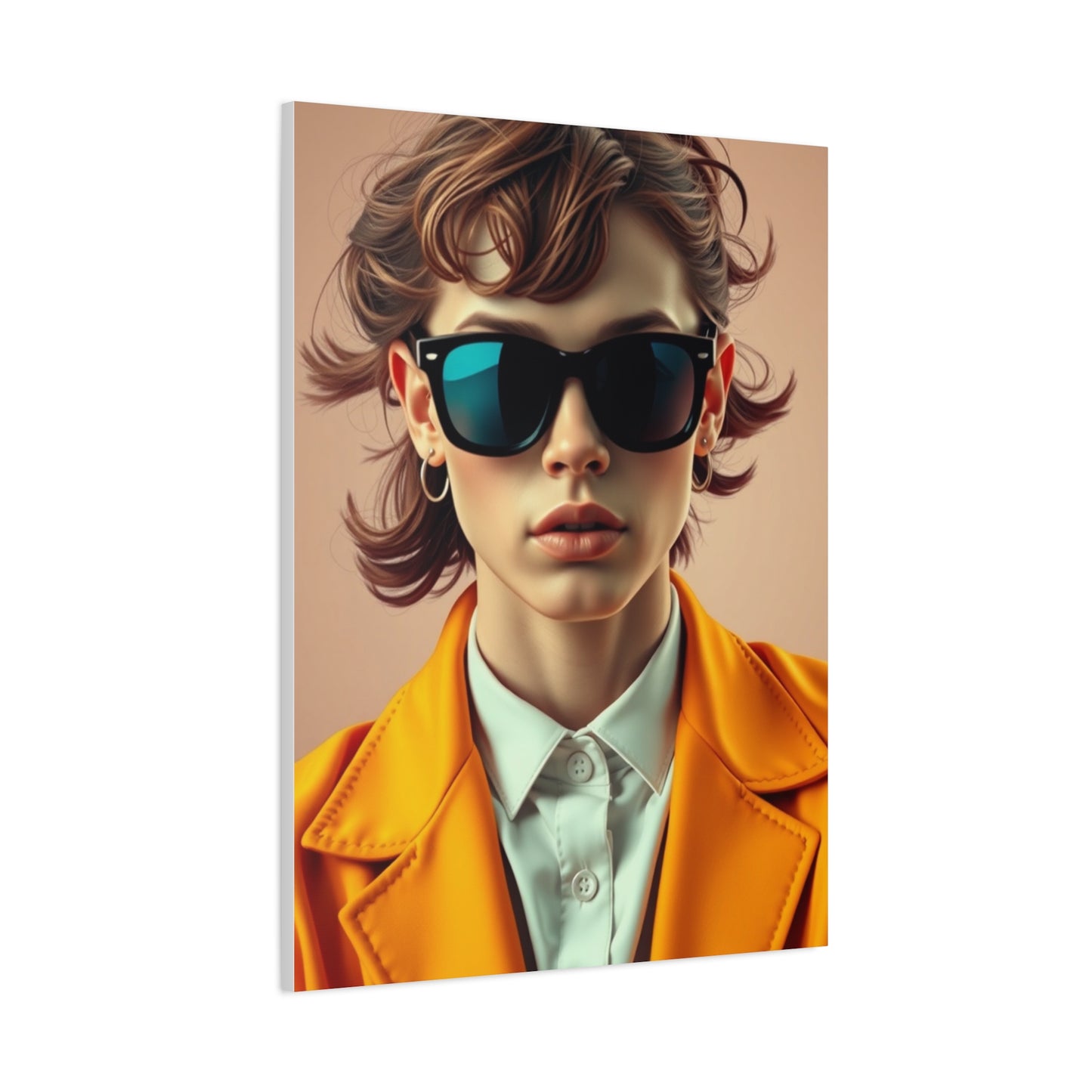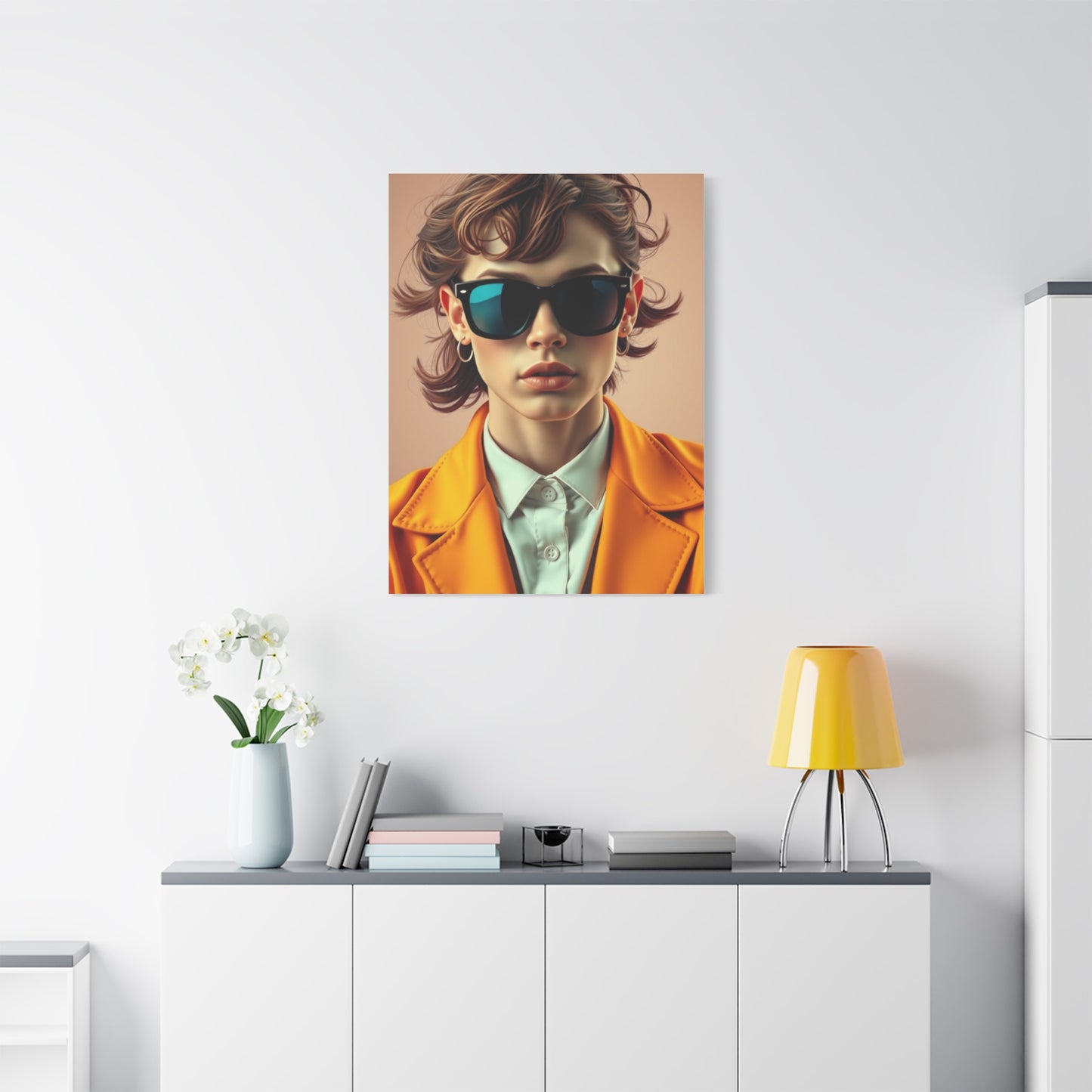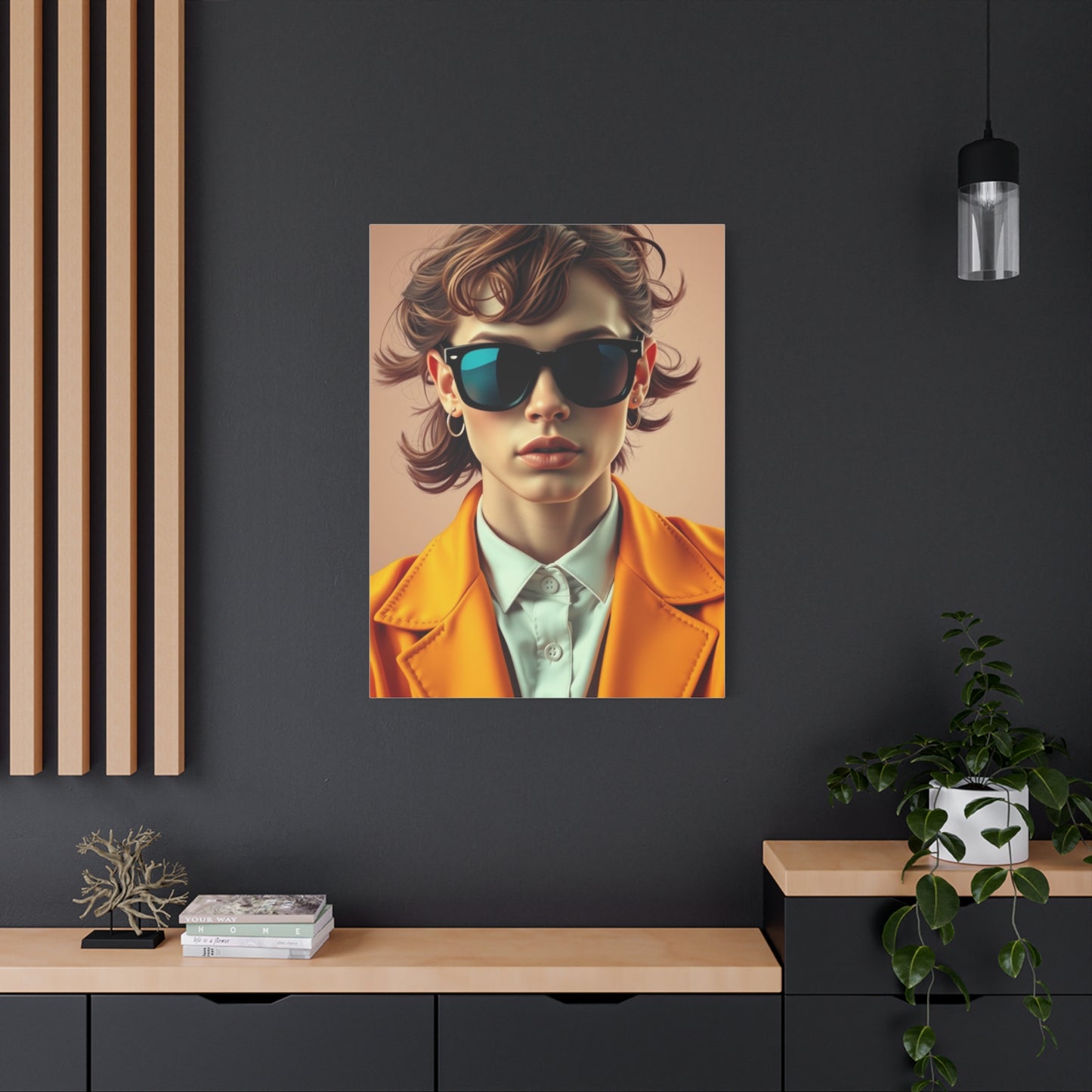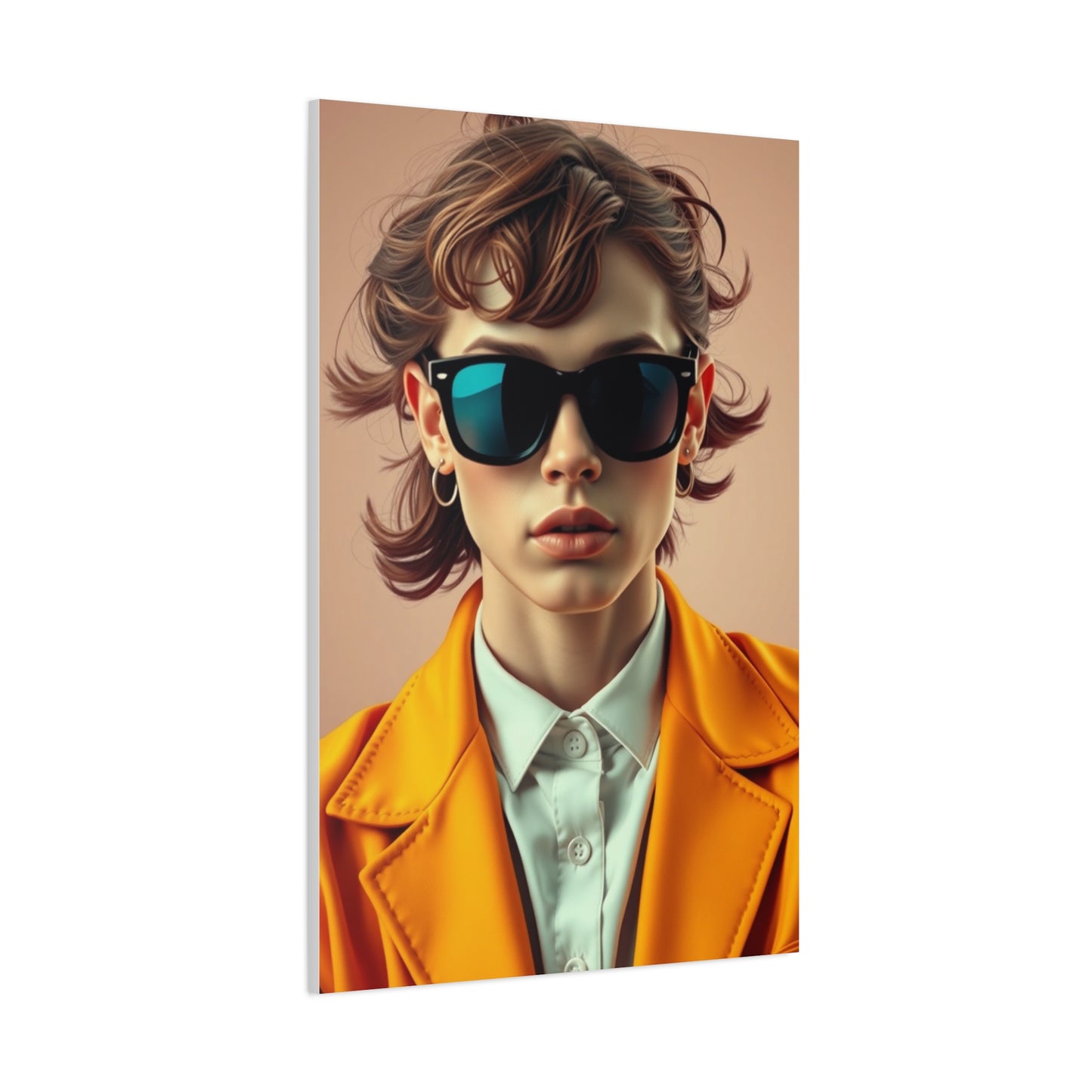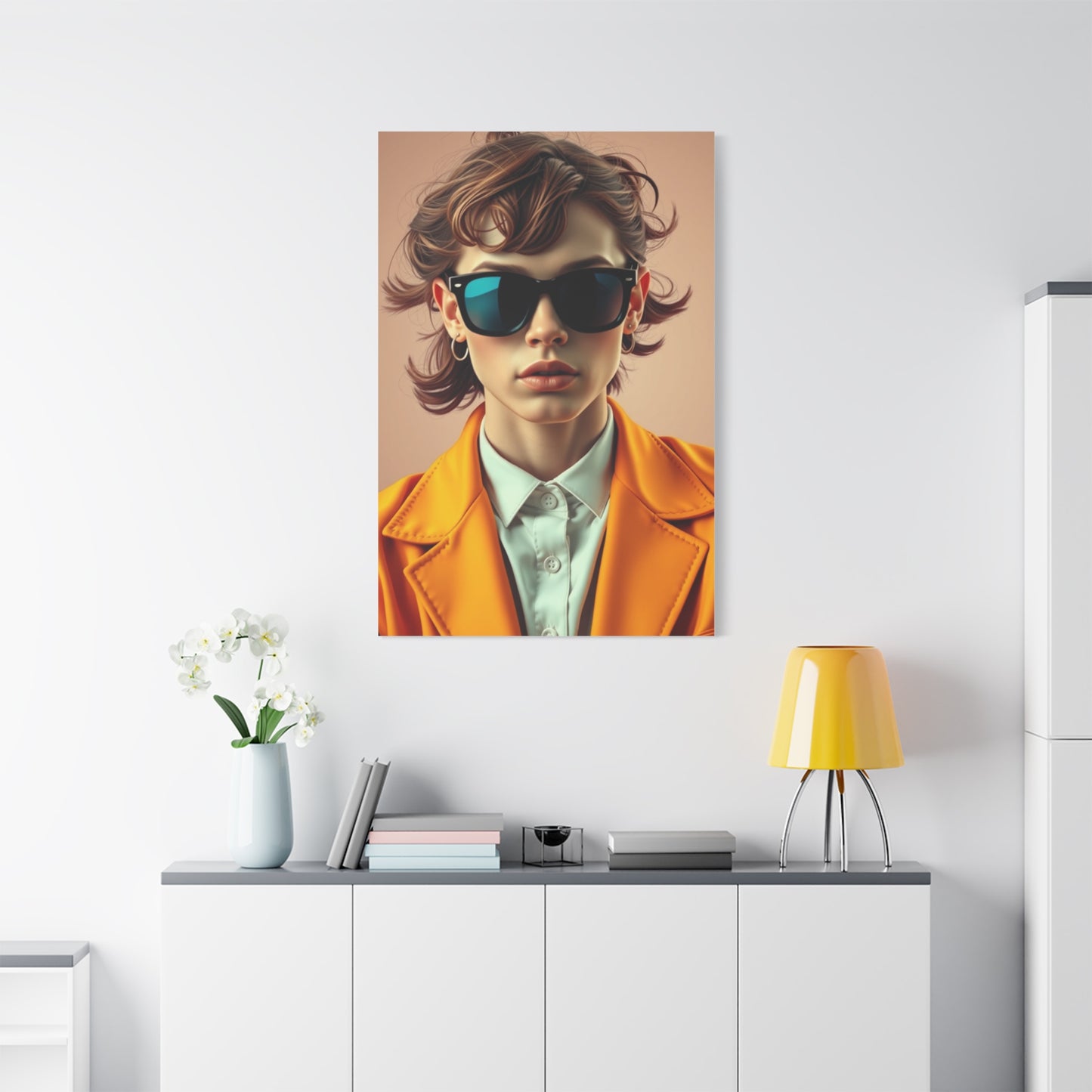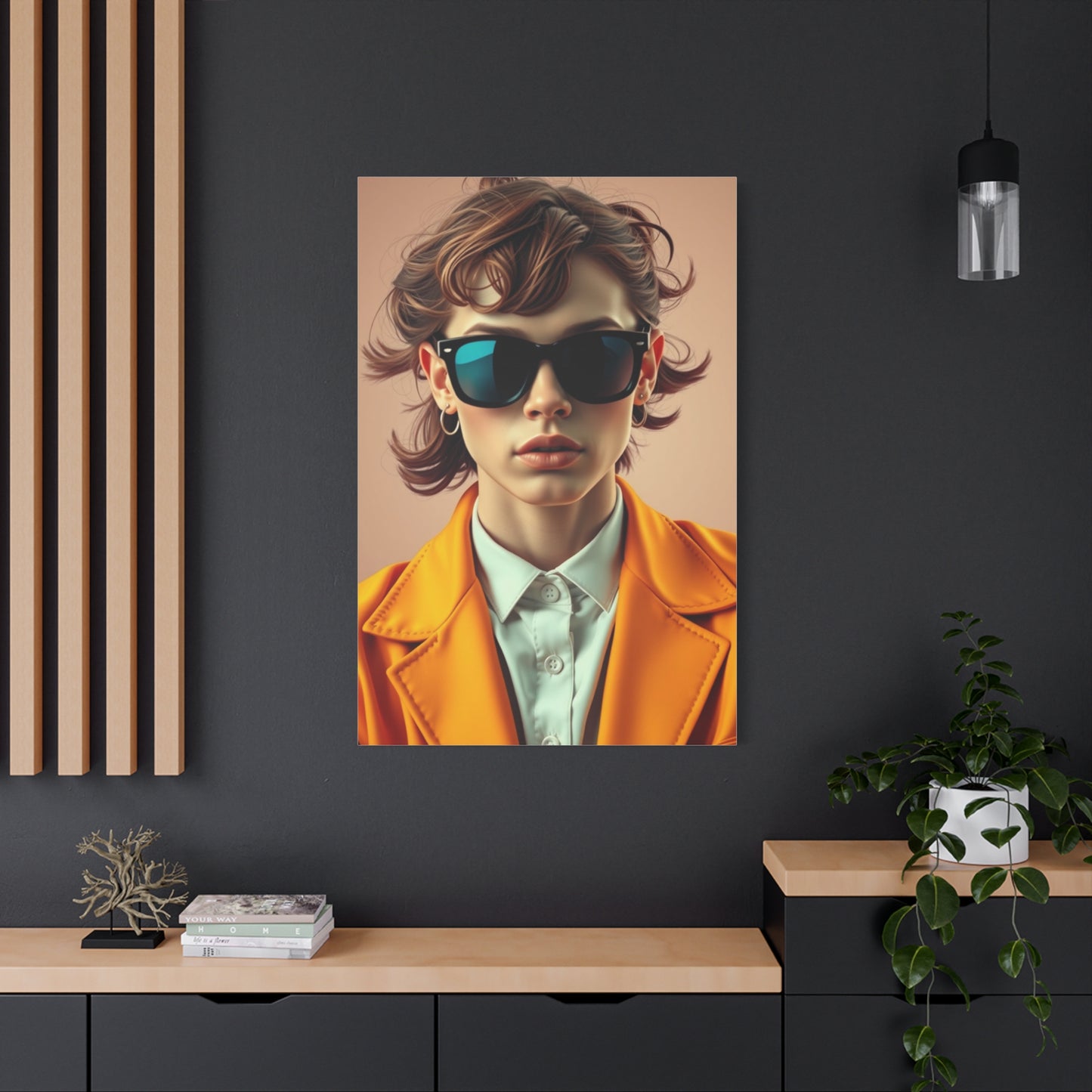A Stylish Reflection: Capturing the Spirit of Refined Retro Reverie
The contemporary home decorating landscape has witnessed a remarkable resurgence of vintage-inspired aesthetics, particularly in the realm of refined retro reverie. This distinctive artistic movement captures the essence of bygone eras while maintaining an unmistakably modern sensibility that resonates with today's discerning homeowners. The appeal lies not merely in nostalgic sentiment but in the sophisticated interpretation of classic design elements that have been thoughtfully reimagined for contemporary living environments.
Refined retro reverie represents more than a simple throwback to previous decades; it embodies a careful curation of historical design elements that have been elevated through modern artistic techniques and contemporary color palettes. This artistic approach celebrates the golden age of design while acknowledging the evolved tastes and refined sensibilities of modern homeowners who appreciate both heritage and innovation.
The movement draws inspiration from multiple decades, seamlessly blending the geometric precision of Art Deco with the organic curves of mid-century modern design. These influences create a unique aesthetic vocabulary that speaks to those who value both historical significance and contemporary relevance. The refined aspect of this artistic approach ensures that nostalgic elements never overwhelm the modern living environment but instead enhance it with subtle sophistication.
Contemporary artists and designers have embraced this aesthetic philosophy, creating pieces that honor vintage design principles while incorporating modern materials, techniques, and color theories. The result is artwork that feels simultaneously familiar and fresh, offering viewers the comfort of recognition paired with the excitement of discovery. This duality makes refined retro reverie particularly appealing to homeowners who desire artwork that tells a story while complementing their contemporary lifestyle.
The sophisticated nature of this artistic movement also reflects a broader cultural shift toward appreciating craftsmanship and timeless design over fleeting trends. In an era dominated by rapid technological change and disposable aesthetics, refined retro reverie offers a sense of permanence and quality that speaks to deeper human needs for stability and beauty.
Historical Foundations of Retro Aesthetic Movement
The roots of refined retro reverie can be traced back to several pivotal periods in design history, each contributing unique elements that continue to influence contemporary artistic expression. The Art Deco movement of the 1920s and 1930s established many of the geometric patterns and luxurious materials that remain central to refined retro aesthetics. This period emphasized symmetry, bold lines, and metallic accents that conveyed both elegance and modernity.
The post-war era of the 1950s introduced a new optimism reflected in design through bright colors, atomic-inspired patterns, and streamlined forms that suggested progress and prosperity. These elements continue to appear in contemporary refined retro pieces, though often with more subdued color palettes and sophisticated material choices that appeal to modern sensibilities.
Mid-century modern design, spanning the 1940s through 1960s, contributed the clean lines and functional beauty that form the backbone of many refined retro pieces. This period's emphasis on bringing natural elements indoors, combined with innovative materials and manufacturing techniques, created a design language that remains relevant and appealing to contemporary audiences.
The 1970s added earthy tones and organic shapes that softened the sometimes stark lines of earlier decades, while the early 1980s contributed bold geometric patterns and metallic finishes that add drama and sophistication to refined retro compositions. Each of these historical periods contributed specific elements that skilled contemporary artists have learned to combine and reinterpret in fresh, innovative ways.
Understanding these historical foundations helps homeowners appreciate why refined retro reverie resonates so deeply with contemporary audiences. These design elements have endured because they represent periods of significant cultural optimism and innovation, qualities that many people seek to incorporate into their personal living environments.
The cyclical nature of design trends also plays a role in the current popularity of refined retro aesthetics. As design movements naturally evolve and react against previous styles, the current embrace of refined retro represents both a reaction against minimalist trends and a desire for more personal, emotionally resonant artistic expression in the home.
Color Theory in Sophisticated Vintage Design
The color palette of refined retro reverie represents one of its most distinctive and appealing characteristics. Unlike authentic vintage pieces that often featured bold, primary colors or the muted earth tones popular in their respective eras, contemporary refined retro art employs sophisticated color theories that create visual harmony while maintaining period authenticity.
Modern interpretations of retro color schemes often feature complex undertones that add depth and sophistication to familiar hues. Where original 1950s pieces might have featured bright turquoise, contemporary refined versions might employ a deeper teal with gray undertones that provides the same visual impact while offering greater versatility in modern home environments.
The sophisticated approach to color in refined retro reverie also involves careful consideration of how colors interact with contemporary lighting conditions and modern materials. LED lighting, for example, renders colors differently than the incandescent lighting common during the original retro periods, requiring artists to adjust their color choices to achieve the desired emotional impact under current lighting conditions.
Neutral tones play an increasingly important role in refined retro color schemes, serving as sophisticated counterpoints to bolder accent colors. These neutrals aren't the stark whites or cool grays often associated with contemporary minimalism, but rather warm, complex tones that suggest aged materials or vintage patina without appearing artificially distressed.
The layering of colors in refined retro pieces often reflects modern understanding of color psychology, with warm undertones providing emotional comfort while cooler accents add visual interest and sophistication. This approach creates artwork that feels both nostalgic and contemporary, appealing to viewers' emotional associations with past eras while satisfying their aesthetic preferences shaped by modern design sensibilities.
Metallic accents remain an important element in refined retro color schemes, but contemporary pieces often employ more subtle applications than their historical predecessors. Rather than bold gold or silver features, modern refined retro might incorporate brushed brass or aged copper tones that suggest luxury without overwhelming the overall composition.
Geometric Patterns and Modern Interpretation
Geometric patterns form the foundation of much refined retro reverie artwork, drawing from the rich tradition of Art Deco design while incorporating modern understanding of visual perception and spatial relationships. Contemporary artists working in this style have developed sophisticated approaches to pattern-making that honor historical precedents while creating fresh, engaging visual experiences.
The chevron pattern, a staple of Art Deco design, appears frequently in refined retro pieces but often with subtle variations that prevent it from feeling derivative. Modern interpretations might vary the angle of the chevrons, introduce slight irregularities that suggest handcrafted quality, or layer multiple chevron patterns at different scales to create complex, visually rich compositions.
Circular and curved elements, borrowed from mid-century modern design, provide important counterpoints to angular geometric forms. Contemporary refined retro artists understand how to balance these opposing forces, creating compositions that feel dynamic without appearing chaotic. The interplay between straight lines and curves often serves as a metaphor for the tension between historical tradition and modern innovation.
Repetitive patterns in refined retro art often employ mathematical principles that weren't fully understood during the original retro periods. Modern artists can create patterns based on fibonacci sequences, golden ratios, and other mathematical relationships that create inherently pleasing visual rhythms while maintaining the organic, intuitive feeling associated with vintage design.
The scale of geometric patterns in contemporary refined retro pieces often reflects modern understanding of viewing distances and architectural proportions. While original retro pieces were designed for smaller homes with lower ceilings, contemporary versions must work effectively in open-plan homes with higher ceilings and longer viewing distances.
Pattern density and complexity in refined retro art strike a careful balance between visual interest and overwhelming busy-ness. Contemporary pieces often employ strategic areas of visual rest that allow the eye to process complex geometric relationships without becoming fatigued, a consideration that makes these pieces more suitable for extended viewing in residential environments.
Typography Integration in Retro Artwork
Typography plays a crucial role in many refined retro reverie pieces, reflecting the era's emphasis on commercial art and graphic design. Contemporary artists working in this style have access to both historical typefaces and modern interpretations that capture period authenticity while ensuring readability and visual impact in current contexts.
The integration of text elements in refined retro artwork often serves multiple purposes beyond mere decoration. Typography can provide historical context, create focal points within complex compositions, and establish emotional connections through the use of period-appropriate language and phrasing. Modern artists understand how to use text as both a design element and a communication tool.
Font selection in refined retro pieces requires careful consideration of both historical accuracy and contemporary functionality. While authentic period typefaces provide immediate visual connection to specific eras, modern versions of these fonts often offer improved legibility and more complete character sets that better serve contemporary artistic needs.
The placement and sizing of typographic elements in refined retro compositions reflect modern understanding of visual hierarchy and information design. Contemporary pieces often employ strategic text placement that guides the viewer's eye through the composition while maintaining the organic, intuitive feeling associated with vintage commercial art.
Color applications in typographic elements within refined retro artwork often demonstrate sophisticated understanding of contrast and readability. While historical pieces sometimes sacrificed legibility for visual impact, contemporary refined retro pieces achieve both through careful color selection and modern printing techniques that maintain crisp text reproduction.
The relationship between typography and other design elements in refined retro compositions reflects contemporary graphic design principles while maintaining period-appropriate visual relationships. Modern artists understand how to create unified compositions where text and image work together harmoniously rather than competing for attention.
Material Choices and Production Techniques
Contemporary refined retro reverie artwork benefits from modern materials and production techniques that allow artists to achieve effects that weren't possible during the original retro periods. These technical advances enable the creation of pieces that capture the essence of vintage aesthetics while offering superior durability and visual quality suitable for modern home environments.
High-quality printing techniques now allow for reproduction of subtle color gradations and metallic effects that add sophistication to refined retro pieces. Digital printing on archival papers ensures that these artworks maintain their visual impact over time, while UV-resistant inks prevent fading that was common in original vintage pieces.
The substrate choices available to contemporary artists working in refined retro styles include options that weren't available historically. Canvas textures that suggest aged materials, papers that mimic vintage patina, and synthetic materials that offer superior durability all contribute to the creation of pieces that feel authentic while meeting modern quality standards.
Framing options for refined retro artwork reflect both period-appropriate styles and contemporary finishing techniques. Modern frame materials can achieve the visual appearance of vintage wood or metal finishes while offering superior stability and resistance to environmental factors that could damage both the frame and the artwork.
Production techniques also allow for limited edition pieces that maintain exclusivity while being more affordable than original vintage artwork. Contemporary printing methods can create subtle variations between prints that suggest the hand-crafted quality associated with original retro pieces while maintaining consistent quality standards.
The combination of traditional artistic techniques with modern production methods allows refined retro artists to focus on design and composition while ensuring that the finished pieces meet contemporary expectations for quality and longevity. This synthesis of old and new approaches reflects the broader philosophy of refined retro reverie itself.
Psychological Impact of Nostalgic Design Elements
The psychological appeal of refined retro reverie extends beyond simple aesthetic preferences, tapping into deep-seated human responses to familiar design elements and cultural symbols. Research in environmental psychology suggests that nostalgic design elements can create feelings of comfort, security, and emotional connection that enhance the overall well-being of home occupants.
The familiarity of retro design elements, even to viewers who didn't experience the original periods, creates what psychologists call "inherited nostalgia" or "cultural memory." These designs feel comfortable and welcoming because they reference periods often perceived as times of optimism, prosperity, and social cohesion, qualities that many contemporary viewers wish to incorporate into their personal environments.
Color choices in refined retro artwork often trigger specific emotional responses based on cultural associations developed over decades. The warm oranges and browns associated with 1970s design, for example, can evoke feelings of comfort and earthiness, while the bright teals and pinks of 1950s design might suggest optimism and energy.
The geometric patterns common in refined retro art also have psychological implications. Regular, predictable patterns can create feelings of order and stability, while slight variations within these patterns maintain visual interest without creating anxiety. This balance between predictability and variety reflects fundamental human psychological needs.
The incorporation of familiar objects and symbols in refined retro artwork creates what psychologists call "recognition pleasure," the positive emotional response that occurs when viewers identify familiar elements within artistic compositions. This response contributes to the immediate appeal and long-term satisfaction that refined retro pieces provide.
The sophisticated interpretation of nostalgic elements in contemporary refined retro art allows viewers to experience these positive psychological effects without feeling that their homes appear dated or derivative. The modern refinement ensures that the emotional benefits of nostalgia enhance rather than overwhelm the contemporary living experience.
Cultural Significance and Modern Relevance
Refined retro reverie represents more than an aesthetic choice; it reflects broader cultural values and social trends that help explain its growing popularity in contemporary home decoration. The movement represents a reaction against the disposable culture of recent decades, embracing instead the values of quality, permanence, and craftsmanship associated with earlier periods.
The cultural significance of refined retro aesthetics also relates to a growing interest in authenticity and personal expression in home environments. In an era of mass-produced furniture and generic decor, refined retro pieces offer homeowners a way to express individual taste and cultural literacy while creating environments that feel personal and meaningful.
The international appeal of refined retro reverie reflects the global influence of American and European design traditions during the mid-20th century. These design languages became cultural exports that continue to resonate with global audiences, making refined retro artwork equally at home in contemporary homes worldwide.
The sustainability implications of refined retro aesthetics align with growing environmental consciousness among consumers. By celebrating and reinterpreting existing design traditions rather than constantly creating entirely new aesthetic languages, refined retro represents a more sustainable approach to home decoration that values longevity over novelty.
The educational aspect of refined retro artwork also contributes to its cultural significance. These pieces serve as accessible introductions to design history, allowing homeowners to engage with important cultural movements and artistic traditions through their daily living environments.
The multigenerational appeal of refined retro aesthetics makes these pieces particularly valuable in family homes where different generations' tastes and memories intersect. Grandparents might appreciate the authentic references to periods they experienced, while younger family members can enjoy the sophisticated modern interpretations.
Curatorial Approaches to Home Display
Successfully incorporating refined retro reverie artwork into contemporary home environments requires thoughtful curatorial approaches that respect both the historical references of the pieces and the overall design coherence of modern living environments. Professional interior designers have developed sophisticated strategies for integrating these pieces effectively.
The grouping of refined retro pieces often follows museum-quality curatorial principles, with careful attention to visual relationships between individual artworks. Rather than randomly distributing vintage-inspired pieces throughout a home, successful installations often create focused areas where these pieces can establish strong visual relationships while contributing to the overall room design.
Scale relationships between refined retro artwork and contemporary furniture require careful consideration. While original retro pieces were designed for the smaller homes and lower ceilings common during their periods, contemporary refined retro pieces must work effectively with modern architectural proportions and furniture scales.
Lighting considerations for refined retro artwork reflect both the technical requirements of proper art display and the atmospheric goals of home lighting design. These pieces often benefit from warm lighting that enhances their nostalgic qualities while providing adequate illumination for proper viewing and appreciation.
The integration of refined retro artwork with contemporary technology presents unique challenges and opportunities. Modern homes often require discrete integration of electronic devices, security systems, and smart home technology that must coexist harmoniously with nostalgic design elements.
Seasonal rotation of refined retro pieces allows homeowners to maintain fresh, engaging environments while building substantial collections over time. This approach reflects museum practices while serving the practical needs of residential environments where variety and change contribute to long-term satisfaction.
Regional Variations in Retro Interpretation
Refined retro reverie manifests differently across various geographic regions, reflecting local cultural influences, historical experiences, and aesthetic preferences that shape how nostalgic design elements are interpreted and applied. These regional variations add richness and diversity to the overall movement while maintaining core aesthetic principles.
European interpretations of refined retro often emphasize craft traditions and materials that reflect the continent's long history of decorative arts. Scandinavian versions might incorporate clean lines and natural materials that reflect regional design traditions, while Mediterranean interpretations could include warmer colors and more ornate decorative elements.
American refined retro interpretations often reflect the country's particular relationship with mid-century modern design and consumer culture. The optimism and prosperity of post-war America created distinctive aesthetic languages that continue to influence contemporary interpretations of refined retro style.
Asian markets have embraced refined retro aesthetics while adapting them to local cultural preferences and living conditions. Japanese interpretations might emphasize minimalist elements and natural materials, while Chinese versions could incorporate traditional color preferences and symbolic elements.
The availability of local materials and manufacturing capabilities also influences regional variations in refined retro artwork. Areas with strong textile traditions might emphasize fabric-based pieces, while regions known for metalworking could favor pieces incorporating sophisticated metal elements.
Cultural attitudes toward nostalgia and historical reference also vary by region, affecting how refined retro elements are interpreted and applied. Some cultures embrace obvious historical references, while others prefer more subtle allusions that require cultural knowledge to fully appreciate.
These regional variations ensure that refined retro reverie remains a living, evolving aesthetic movement rather than a static reproduction of historical styles. The continuous reinterpretation and adaptation of core principles keeps the movement fresh and relevant to contemporary audiences worldwide.
Technology's Role in Contemporary Retro Art
Modern technology plays a crucial role in the creation and distribution of refined retro reverie artwork, enabling effects and production techniques that weren't available during the original retro periods. Digital design tools allow artists to experiment with color relationships, pattern variations, and compositional arrangements with unprecedented flexibility and precision.
Computer-aided design software enables artists to create complex geometric patterns with mathematical precision while maintaining the organic, hand-crafted feeling associated with vintage design. These tools allow for subtle variations and adjustments that would have been extremely time-consuming or impossible to achieve using traditional methods.
Digital color matching and calibration ensure that refined retro pieces maintain consistent color reproduction across different production runs and display conditions. This technical capability allows artists to achieve the sophisticated color relationships that distinguish contemporary refined retro from simple vintage reproduction.
Online marketplaces and social media platforms have democratized access to refined retro artwork, allowing artists to reach global audiences while enabling collectors to discover pieces from artists worldwide. This expanded access has contributed to the rapid growth and evolution of the refined retro movement.
Virtual reality and augmented reality technologies now allow homeowners to preview refined retro artwork in their actual living environments before making purchase decisions. This capability reduces uncertainty and increases satisfaction with final selections while reducing returns and exchanges.
The integration of smart home technology with traditional artwork presentation creates new possibilities for displaying refined retro pieces. Programmable lighting systems can adjust color temperature and intensity to optimize the viewing experience for different pieces throughout the day and across seasons.
3D printing and other advanced manufacturing techniques enable the creation of frames, mounting systems, and display accessories that perfectly complement refined retro artwork while meeting contemporary functional requirements. These technologies allow for customization and personalization that enhances the overall artistic experience.
Sustainability Considerations in Retro Art Production
Contemporary refined retro reverie artwork increasingly reflects environmental consciousness through sustainable production methods, material choices, and distribution strategies that minimize ecological impact while maintaining artistic quality and visual appeal. This focus on sustainability aligns with the broader values of quality and longevity associated with refined retro aesthetics.
Digital production techniques used in creating refined retro artwork often generate less waste than traditional printing methods, while advances in ink chemistry have produced more environmentally friendly options that maintain the color vibrancy and longevity required for high-quality artistic reproduction.
The use of recycled and recyclable materials in both artwork production and packaging reflects growing environmental awareness within the artistic community. Papers made from agricultural waste, soy-based inks, and recyclable mounting materials all contribute to reduced environmental impact.
Local and regional production strategies reduce transportation-related environmental costs while supporting local economies and crafts traditions. Many refined retro artists now work with local printers and framers to reduce shipping requirements and support community-based businesses.
The longevity inherent in well-designed refined retro pieces supports sustainability goals by reducing the frequency of replacement and redecoration. Quality pieces that remain visually appealing and emotionally satisfying over many years represent more sustainable choices than frequently replaced decorative elements.
Digital distribution methods for certain types of refined retro artwork eliminate shipping requirements entirely while allowing for print-on-demand production that reduces inventory waste. These approaches particularly suit buyers who prefer to handle their own printing and framing arrangements.
The restoration and reinterpretation of original vintage pieces represents another form of sustainability within the refined retro movement, extending the useful life of existing materials while creating new artistic works that honor historical precedents.
Economic Factors Influencing Market Development
The refined retro reverie market operates within complex economic dynamics that influence pricing, production decisions, and consumer accessibility. Understanding these factors helps explain the movement's growth patterns and future development potential while informing both artists and collectors about market trends.
Production costs for refined retro artwork vary significantly based on materials, techniques, and scale of production. Limited edition pieces command premium prices that reflect both exclusivity and higher per-unit production costs, while larger print runs enable more accessible pricing for broader market segments.
The market for refined retro artwork benefits from multiple price points that accommodate different consumer segments. Entry-level pieces allow new collectors to participate in the movement, while premium pieces satisfy established collectors seeking unique or particularly sophisticated works.
International trade considerations affect both the availability and pricing of refined retro artwork across different markets. Currency fluctuations, shipping costs, and import duties all influence the final cost to consumers and the viability of international distribution strategies for artists and publishers.
The secondary market for refined retro pieces remains relatively undeveloped compared to markets for traditional fine art or genuine vintage pieces. This situation creates opportunities for early collectors while suggesting potential for appreciation as the movement matures and gains broader recognition.
Economic cycles affect consumer spending on decorative artwork, with refined retro pieces generally performing well during stable economic periods when homeowners invest in long-term home improvements. The movement's emphasis on quality and permanence appeals to consumers seeking lasting value.
The digital marketplace has reduced barriers to entry for both artists and consumers, enabling more efficient price discovery and broader market participation. Online platforms allow for direct artist-to-consumer sales that eliminate traditional gallery markups while providing artists with better profit margins.
Aspects and Design Literacy
Refined retro reverie artwork serves important educational functions, introducing viewers to design history, aesthetic principles, and cultural contexts that enhance overall design literacy and cultural understanding. This educational dimension adds value beyond pure decoration, making these pieces particularly appealing to intellectually curious homeowners.
The historical references embedded in refined retro pieces provide accessible entry points for learning about significant design movements, cultural periods, and aesthetic philosophies. Viewers can develop understanding of Art Deco, mid-century modern, and other important design traditions through daily interaction with thoughtfully created contemporary interpretations.
Pattern recognition and color theory concepts become intuitive through regular exposure to well-designed refined retro pieces. The sophisticated use of geometric relationships, color harmonies, and compositional principles in these works provides informal education in fundamental design concepts.
Cultural literacy benefits from exposure to refined retro artwork that references significant historical periods, social movements, and technological developments. These pieces can spark interest in learning more about the contexts that created the original design movements they reference and reinterpret.
The comparative analysis opportunities provided by refined retro pieces enhance critical thinking skills. Viewers can examine how contemporary artists interpret historical precedents, identifying both continuities and innovations that reflect changing cultural values and aesthetic preferences.
Cross-cultural design appreciation develops through exposure to refined retro pieces that draw from various international traditions. The global influence of mid-20th century design movements created shared aesthetic vocabularies that contemporary artists continue to explore and reinterpret.
Professional development in design-related fields benefits from understanding refined retro aesthetics, as these approaches demonstrate successful strategies for balancing historical reference with contemporary innovation. This knowledge applies across various design disciplines from architecture to product design.
Therapeutic Benefits of Nostalgic Art
The psychological and therapeutic benefits of refined retro reverie artwork extend beyond aesthetic pleasure, contributing to emotional well-being, stress reduction, and cognitive health through mechanisms that researchers are beginning to understand and document. These benefits make refined retro pieces particularly valuable in residential environments where occupants seek comfort and restoration.
Nostalgic imagery and familiar design elements can trigger positive emotional states that reduce anxiety and promote feelings of security and comfort. The recognizable patterns and color schemes associated with refined retro art provide visual anchors that create psychological stability in uncertain times.
Cognitive stimulation through pattern recognition and visual processing exercises mental faculties in beneficial ways. The complex geometric relationships and color interactions common in refined retro pieces provide gentle mental engagement that can support cognitive health and prevent mental stagnation.
Memory stimulation through nostalgic references can provide therapeutic benefits for individuals experiencing memory-related challenges. The familiar design elements in refined retro artwork can trigger positive memory associations that support emotional well-being and personal identity maintenance.
Stress reduction through visual harmony and balanced composition helps create restorative environments that support recovery from daily stresses. The sophisticated color relationships and pleasing proportions characteristic of refined retro art contribute to environments that promote relaxation and restoration.
Social connection benefits arise when refined retro artwork provides conversation starters and shared cultural references that facilitate interpersonal connections. These pieces can bridge generational gaps and create opportunities for sharing memories and cultural knowledge.
Creative inspiration from exposure to sophisticated design solutions can stimulate personal creativity and problem-solving abilities. The innovative approaches to combining historical reference with contemporary sensibility demonstrated in refined retro artwork can inspire creative thinking in other areas of life.
Professional Applications Beyond Home Decor
Refined retro reverie aesthetics find application in numerous professional contexts beyond residential decoration, demonstrating the versatility and broad appeal of this design approach. These professional applications often require adaptations that maintain core aesthetic principles while meeting specific functional and cultural requirements.
Commercial establishments, particularly those targeting demographics with appreciation for sophisticated design, often incorporate refined retro elements to create distinctive brand identities and customer experiences. Restaurants, boutiques, and service businesses use these aesthetics to communicate values of quality, authenticity, and attention to detail.
Healthcare environments benefit from the calming and familiar qualities of refined retro design elements. The nostalgic associations and sophisticated color palettes can reduce anxiety and create more comfortable environments for patients and their families during stressful medical experiences.
Educational institutions, particularly those emphasizing creative and cultural studies, often incorporate refined retro elements to create inspiring learning environments that connect students with important design traditions while demonstrating contemporary applications of historical principles.
Hospitality industry applications range from boutique hotels that use refined retro aesthetics to create distinctive experiences to event venues that employ these design elements to create memorable celebrations and gatherings. The versatility of refined retro allows for adaptation to various functional requirements.
Corporate environments increasingly recognize the value of sophisticated aesthetic approaches that move beyond generic contemporary design. Refined retro elements can humanize corporate environments while communicating values of heritage, quality, and cultural sophistication.
Exhibition and museum applications demonstrate refined retro aesthetics in their purest form, where historical reference and contemporary interpretation can be explored and explained for educational purposes. These settings often showcase the most sophisticated examples of contemporary refined retro art.
Conclusion
Refined retro reverie wall art represents a sophisticated artistic movement that successfully bridges the gap between nostalgic appreciation and contemporary living requirements. Through careful reinterpretation of historical design elements, contemporary artists have created a distinctive aesthetic language that honors the past while serving present-day functional and emotional needs. The movement's emphasis on quality, craftsmanship, and timeless design principles offers an alternative to disposable decorating trends while providing homeowners with artwork that grows more meaningful over time.
The psychological benefits of refined retro aesthetics extend beyond simple visual pleasure, contributing to emotional well-being through familiar design elements that create feelings of comfort, security, and cultural connection. The sophisticated color palettes, geometric patterns, and thoughtful compositions characteristic of refined retro pieces provide visual harmony that supports restful, inspiring living environments. These therapeutic qualities make refined retro artwork particularly valuable in contemporary homes where occupants seek refuge from increasingly complex and stressful daily experiences.
The educational dimensions of refined retro reverie artwork add lasting value that distinguishes these pieces from purely decorative alternatives. Through daily interaction with thoughtfully created contemporary interpretations of historical design movements, homeowners develop greater design literacy and cultural understanding. This educational aspect transforms the act of home decoration into an ongoing learning experience that enriches personal knowledge and appreciation for significant cultural traditions.
The sustainability implications of refined retro aesthetics align with growing environmental consciousness and represent responsible approaches to home decoration. The movement's emphasis on quality and permanence supports sustainable consumption patterns, while contemporary production techniques increasingly incorporate environmentally friendly materials and processes. This alignment between aesthetic preferences and environmental values makes refined retro choices particularly satisfying for conscientious consumers.
The future evolution of refined retro reverie will likely reflect continued technological advances, changing cultural references, and evolving lifestyle patterns while maintaining the core values of quality, sophistication, and meaningful design that define the movement. As new generations develop their own nostalgic associations and technological capabilities expand creative possibilities, refined retro aesthetics will continue adapting and growing while preserving their essential character.
The accessibility of refined retro artwork through various price points and distribution methods ensures that this sophisticated aesthetic approach remains available to diverse consumer segments rather than being limited to luxury markets. This democratic accessibility supports the movement's continued growth and cultural influence while allowing individual consumers to participate according to their specific needs and preferences.
The professional applications of refined retro aesthetics demonstrate the versatility and broad appeal of this design approach beyond residential contexts. From commercial establishments seeking distinctive brand identities to healthcare environments requiring calming visual elements, refined retro principles prove adaptable to various functional requirements while maintaining their essential aesthetic character.
The global appeal of refined retro reverie reflects the international influence of mid-20th century design movements while allowing for regional interpretations that incorporate local cultural preferences and traditions. This combination of universal principles and local adaptation ensures that refined retro aesthetics remain relevant and meaningful across diverse cultural contexts.
The curatorial approaches required for successful integration of refined retro artwork into contemporary homes reflect professional museum practices adapted for residential environments. These sophisticated presentation strategies maximize the visual impact and emotional resonance of individual pieces while creating coherent aesthetic environments that support daily living activities.
Ultimately, refined retro reverie wall art offers contemporary homeowners an opportunity to create personally meaningful, aesthetically sophisticated, and emotionally satisfying living environments that honor cultural heritage while serving present-day needs. The movement's continued evolution and adaptation ensure that these benefits will remain available to future generations who seek alternatives to disposable decorating trends and desire artwork that provides lasting value, beauty, and cultural connection in their daily lives.

















